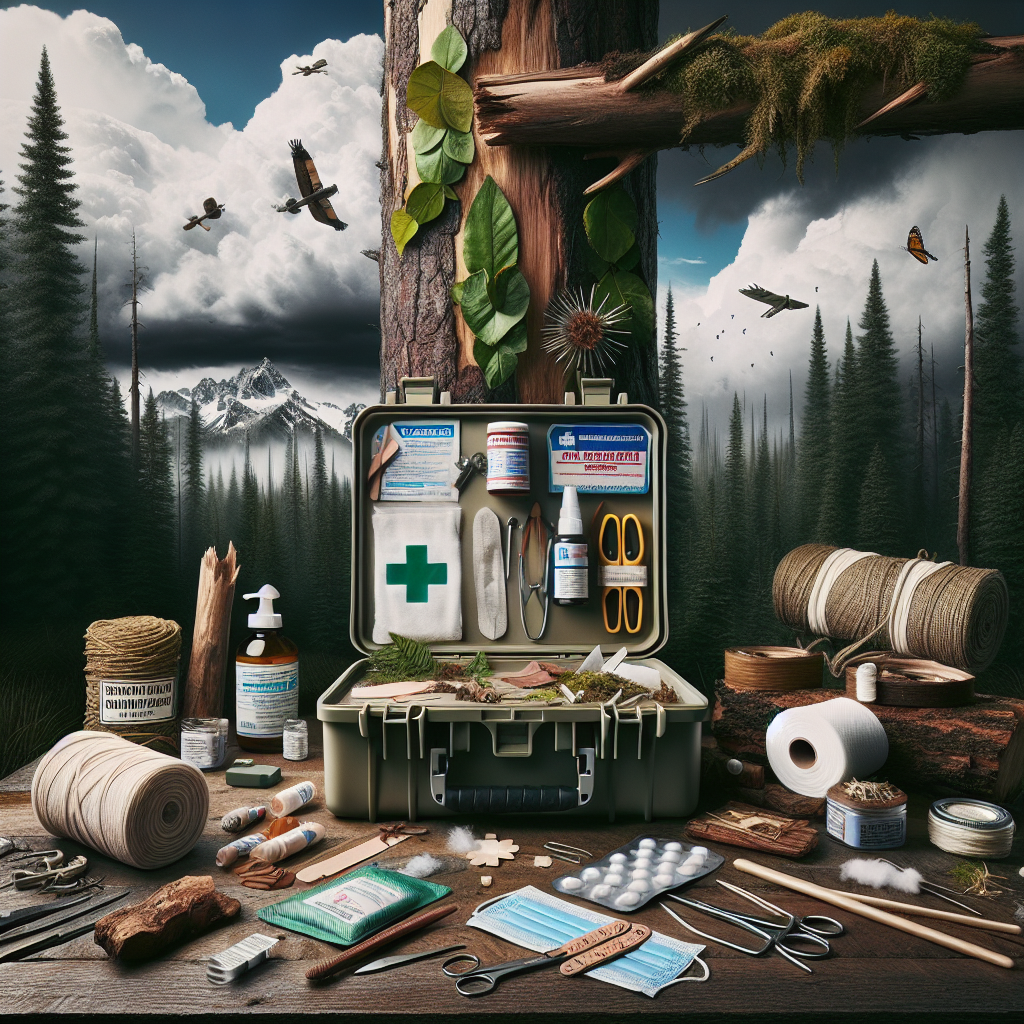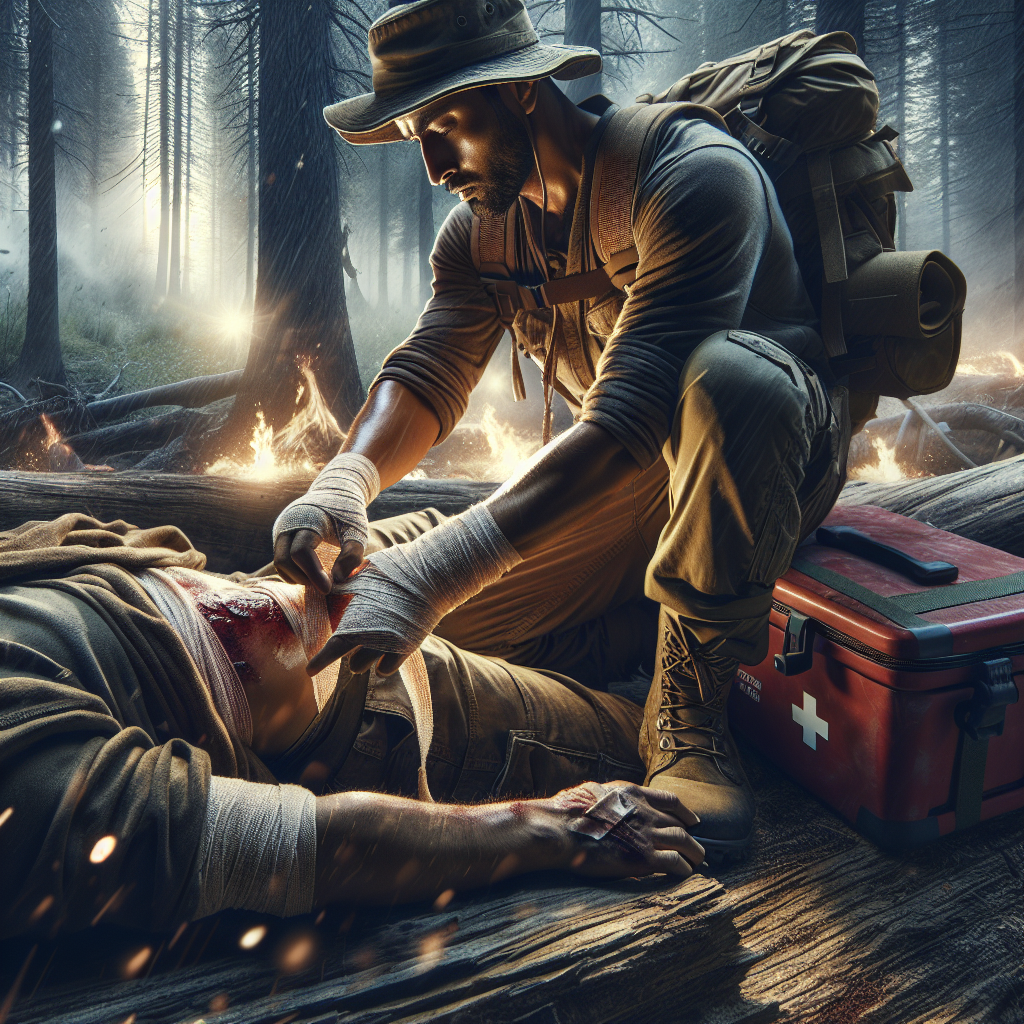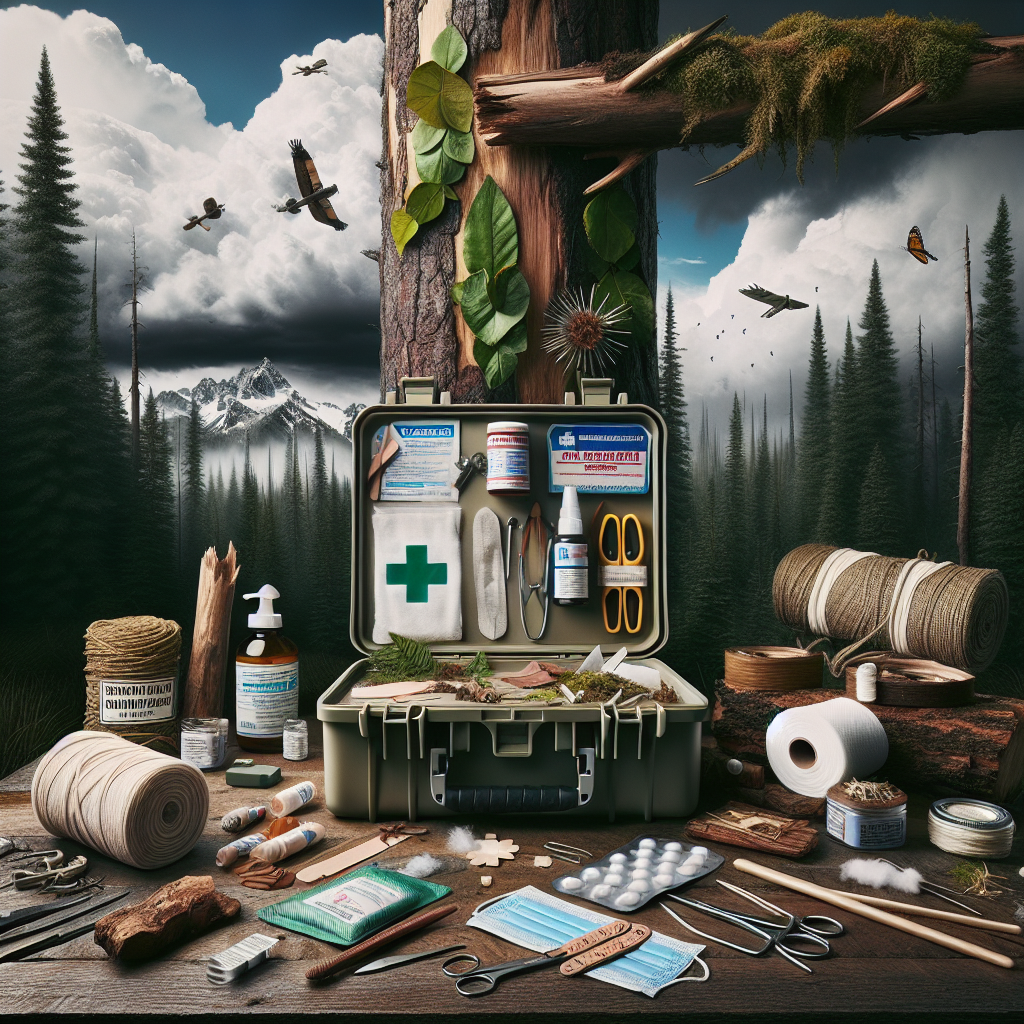In the unpredictable world we live in, accidents and injuries can happen at any given moment. Whether you find yourself stranded in the wilderness or faced with a sudden emergency, having the knowledge and skills to effectively treat wounds and injuries can be a lifesaver. In this article, we will explore the essential elements of survival first aid, equipping you with the tools to provide prompt and effective care when it matters most. So, grab your bandages and get ready to discover the secrets of treating wounds and injuries in survival situations.
I. First Aid Basics
A. Importance of First Aid
First aid is a crucial skill that everyone should possess. Whether you’re at home, at work, or enjoying the great outdoors, accidents and injuries can happen at any time. Being able to provide immediate and effective first aid can make a significant difference in saving lives, preventing further harm, and promoting recovery. By knowing the basics of first aid, you can be prepared to respond quickly and appropriately in emergency situations.
B. Initial Assessment
When faced with a medical emergency, it’s important to perform an initial assessment of the situation before administering any first aid. This assessment involves evaluating the scene for any potential dangers and ensuring your safety. Once you have determined that it is safe to proceed, assess the person’s condition by checking for responsiveness, breathing, and signs of severe bleeding or injuries. This initial assessment will help you prioritize your actions and provide the necessary care.
C. ABCs of First Aid
The ABCs of first aid stand for Airway, Breathing, and Circulation. These are the fundamental aspects of providing emergency care to someone in need. First, check the person’s airway to ensure it is clear and unobstructed. If necessary, gently tilt their head back and lift their chin to open the airway. Next, assess their breathing by observing their chest rise and fall or listening for breath sounds. If the person is not breathing, begin CPR immediately. Lastly, check for signs of circulation by feeling for a pulse or observing any severe bleeding. Address any life-threatening issues related to the ABCs before moving on to other injuries or wounds.
D. Personal Protective Equipment (PPE)
When providing first aid, it’s important to protect yourself from potential risks and hazards. Personal Protective Equipment (PPE) includes gloves, masks, goggles, and any other protective gear that may be necessary depending on the situation. Wearing appropriate PPE can prevent the transmission of diseases, protect against exposure to bodily fluids, and ensure your own safety while administering care. Remember to always have a well-stocked first aid kit containing essential PPE items for any emergency.

II. Basic Wound Care
A. Clean the Wound
Proper wound cleaning is crucial to prevent infection and promote healing. Begin by washing your hands with soap and clean water. If available, use gloves to protect both yourself and the injured person. Gently rinse the wound under cool running water, removing any debris or dirt. Avoid using strong antiseptics or harsh chemicals, as they may damage the tissue. Pat the wound dry with a sterile gauze or clean cloth, and avoid rubbing or scrubbing the area.
B. Control Bleeding
Bleeding can vary in severity, ranging from minor scrapes to severe arterial bleeding. To control bleeding, apply direct pressure to the wound using a clean cloth or sterile dressing. Maintain continuous pressure until the bleeding stops. If the bleeding does not stop or is severe, elevate the wound above the level of the heart and apply additional pressure. If necessary, use a tourniquet as a last resort, but only if you have received proper training and there is no other option available.
C. Apply Antibiotic Ointment
After cleansing the wound, apply a thin layer of antibiotic ointment to prevent infection. This will create a barrier against bacteria and promote healing. Be sure to use an antibiotic ointment that is suitable for the type of wound and follow the instructions provided. Avoid excessive use of ointment, as it can interfere with the healing process. Cover the wound with a sterile dressing or adhesive bandage to protect it from further contamination.
D. Cover the Wound
Covering the wound with an appropriate dressing helps protect it from dirt, bacteria, and other contaminants. Use a sterile gauze pad or adhesive bandage that is large enough to fully cover the wound. Secure the dressing in place with tape or adhesive strips, ensuring it is snug but not too tight. Check the wound regularly for signs of infection, such as increased redness, swelling, or discharge. Change the dressing as necessary, following proper hygiene practices each time.

III. Treating Specific Injuries
A. Burns
Burns can occur from various sources, including heat, chemicals, electricity, or radiation. The first step in treating a burn is to remove the person from the source of the burn and assess the severity. For minor burns, cool the affected area under running water for at least 10 minutes to reduce pain and prevent further damage. Do not use ice or very cold water, as it may worsen the burn. Cover the burn with a sterile non-stick dressing or cling film to protect it from infection. For more severe burns, seek medical assistance immediately.
B. Fractures
Fractures, or broken bones, require careful handling to prevent further injury. If you suspect someone has a fracture, encourage them to stay still and avoid any unnecessary movement. Immobilize the injured area by splinting it with a rigid object, such as a board or folded magazines. Use bandages or cloth to secure the splint in place, making sure it is snug but not too tight. Elevate the injured limb, if possible, to reduce swelling. Seek medical attention as soon as possible for proper diagnosis and treatment.
C. Sprains and Strains
Sprains and strains are common injuries that can occur during physical activity or accidents. To treat a sprain or strain, remember the acronym R.I.C.E.: Rest, Ice, Compression, and Elevation. Encourage the person to rest and avoid putting weight on the injured area. Apply an ice pack or cold compress wrapped in a cloth for 20 minutes every 2-3 hours to reduce swelling and pain. Use a compression bandage to support the injured area, but ensure it is not too tight. Elevate the injured limb above the level of the heart to minimize swelling. If symptoms worsen or persist, seek medical advice.
D. Dislocations
Dislocations occur when the bones in a joint are forced out of their normal position. If you suspect a dislocation, do not attempt to relocate the joint yourself. Instead, immobilize the injured area by splinting it with a rigid object, similar to treating a fracture. Apply ice wrapped in a cloth to reduce pain and swelling. Seek immediate medical attention to have the dislocation reduced by a healthcare professional. Do not try to force the joint back into place, as this may cause further damage.
E. Eye Injuries
Eye injuries can range from minor irritation to severe damage. If a foreign object is lodged in the eye, avoid rubbing the eye, as it may cause further injury. Instead, gently flush the eye with clean water to remove the object. If there is a chemical splash to the eye, immediately rinse the eye with water for at least 15 minutes. Cover the injured eye with a sterile pad or clean cloth and seek medical help. For any eye injury, it is essential to seek professional medical assistance promptly to prevent long-term damage.
F. Head Injuries
Head injuries can be serious and require immediate medical attention. If someone has suffered a head injury, encourage them to rest and avoid any exertion. Apply a cold compress wrapped in a cloth to help reduce swelling and pain. Keep a close eye on the person for any changes in consciousness, abnormal behavior, or worsening symptoms. If they lose consciousness or their condition deteriorates, call for emergency medical assistance right away.
G. Insect Bites and Stings
Insect bites and stings can cause discomfort and allergic reactions. If stung by a bee, remove the stinger by scraping it off with a flat-edged object, such as a credit card. Wash the affected area with soap and water to prevent infection. Apply a cold compress to reduce swelling and alleviate pain. For tick bites, use tweezers to grasp the tick close to the skin’s surface and pull upward with steady pressure. Wash the bite site with soap and water after removing the tick. If there are signs of an allergic reaction or if symptoms worsen, seek medical assistance.
H. Hypothermia and Frostbite
Hypothermia and frostbite occur in cold weather conditions and can be life-threatening if not treated promptly. If someone is experiencing hypothermia, move them to a warm environment and remove any wet clothing. Wrap them in warm blankets or use your body heat to help raise their temperature. Offer warm beverages if they are conscious and able to swallow. To treat frostbite, gently rewarm the affected area by soaking it in warm water. Avoid using hot water or direct heat sources, as they can cause more damage. Seek medical attention immediately for both hypothermia and severe frostbite.
I. Heat Exhaustion and Heatstroke
Heat exhaustion and heatstroke can occur in hot weather, particularly during physical exertion. If someone shows symptoms of heat exhaustion, move them to a cool and shaded area. Encourage them to drink cool water or sports drinks to rehydrate. Apply cool compresses to their neck, armpits, and groin to help lower their body temperature. If someone shows signs of heatstroke, call for emergency medical assistance immediately. While waiting for help to arrive, move the person to a cool area and remove excess clothing. Apply cool water or ice packs to their body to help lower their temperature.
By familiarizing yourself with these first aid basics, you’ll be better equipped to handle emergency situations and provide the necessary care until professional help arrives. Remember, even the smallest actions can make a significant difference in saving a life and ensuring the well-being of those around you. Stay prepared, stay calm, and trust in your ability to provide the help needed.

